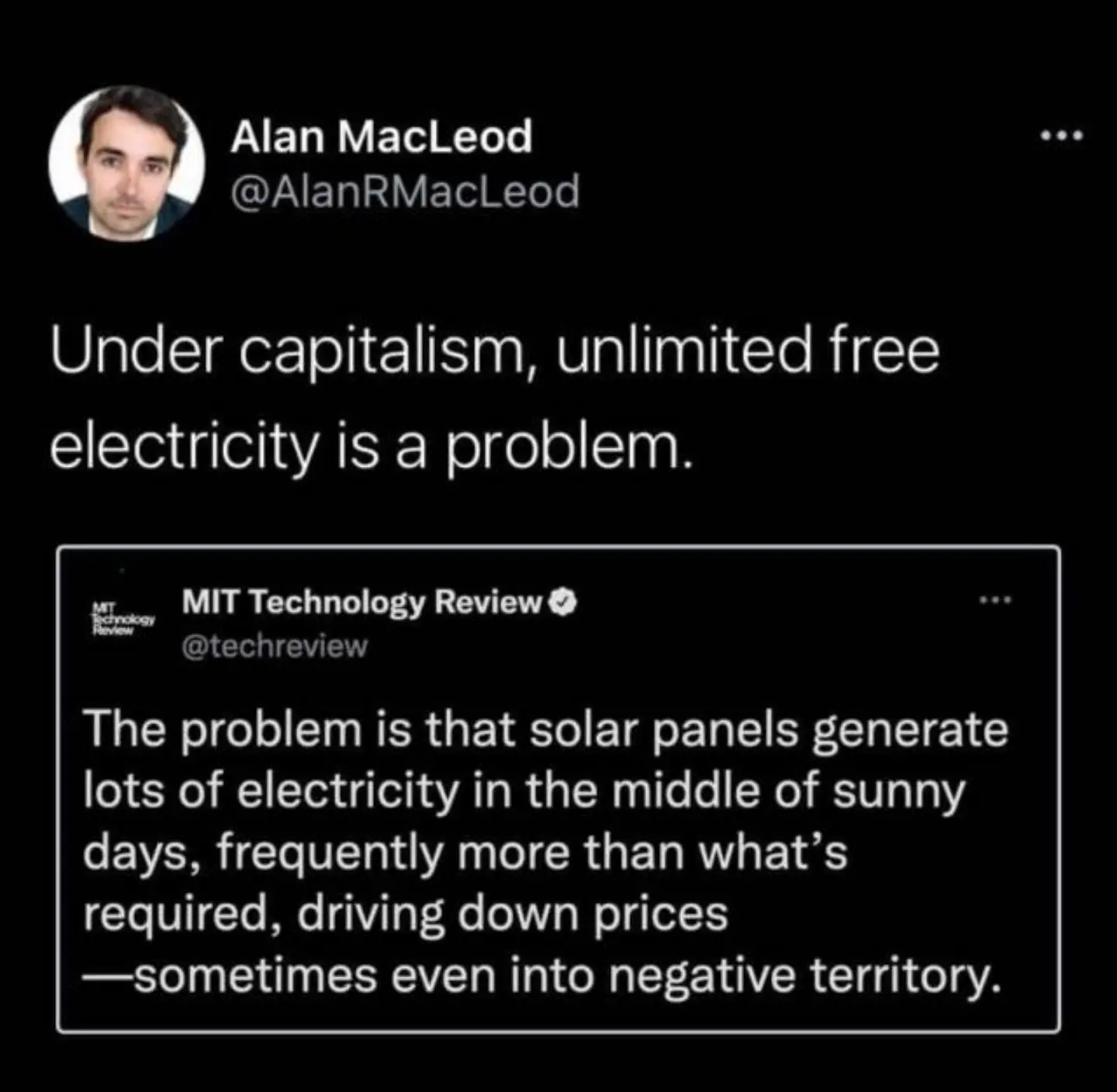this post was submitted on 09 Apr 2024
1659 points (96.1% liked)
Solarpunk
5507 readers
107 users here now
The space to discuss Solarpunk itself and Solarpunk related stuff that doesn't fit elsewhere.
Join our chat: Movim or XMPP client.
founded 2 years ago
MODERATORS
you are viewing a single comment's thread
view the rest of the comments
view the rest of the comments

You can adapt to these inefficies, sure, but doing so still takes more planning and effort (in this case in carefully timing one's phone charging, and in avoiding power using activities like that during non ideal times) than if there was no mismatch of availability and demand. It lessens the impact of the problem, but does not entirely remove it.
In the OP the use of the word "problem" rather than something like "challenge", and referring to the problem being the pricing structure (negative) makes it seem like we've switched topics slightly, but if you are just referring to the foundational inefficiency of energy distribution then yeah I agree it is definitely a challenge. However, that challenge need not be so overwhelming (even perhaps solely wrt pricing) that it negates the benefits of having that form of technology available altogether. e.g. if the power company itself, or each recipient building individually, had its own battery (if let's say those were cheap & sustainable) then that could work, without the users needing to care much. I forget which city but one example in Germany iirc pumps water up a mountain during the day, then at night or on a cloudy day that potential energy falling back down generates electricity again. So yes a "challenge" for sure but not necessarily an insurmountable one!:-)
Also, there are "problems"/"challenges" wrt use of fossil fuels as well, which have implications for climate change, and therefore even purely from a profit perspective there's government laws & subsidies and public perception that can affect it, which could push the overall net towards being beneficial to store that energy for later.
The answer to this is local energy storage. It could be at the home level, but doing it by neighborhood/industrial block would be better
Then, you lessen the strain on the grid at large, and you also capitalize on the periods of low demand. This means less spot energy production and built in storage, making it easier to make the most of renewables while minimizing the need to fire up a natural gas plant to make up the difference